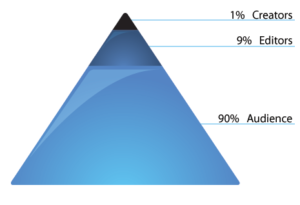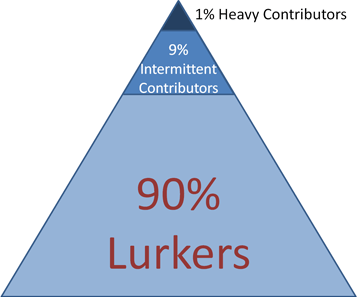The 90-9-1 Principle

Here are a few tips to improve the social dynamic across these three groups:
- Make contributing easy for everyone. Design contribution tools that scale in complexity, giving power tools to power users, while easing usage for light users.
- Encouraging editing over creating. Blank pages are scary. Create templates, rough examples that can be easily edited, content suggestions, and tons of examples that help eliminate the fear factor.
- Reward participants. People will give up their first born for a gold star next to their name. Go easy on the rewards, but certainly bake them into the process of participation.
- Identify both power users and up and coming users. Call out your power users with featured spots on your home page or corporate blog. And don’t forget that if you always call out the top 10 users, the other 90,000 won’t feel like they have a chance. Shine the spotlight on the up and comers too!

